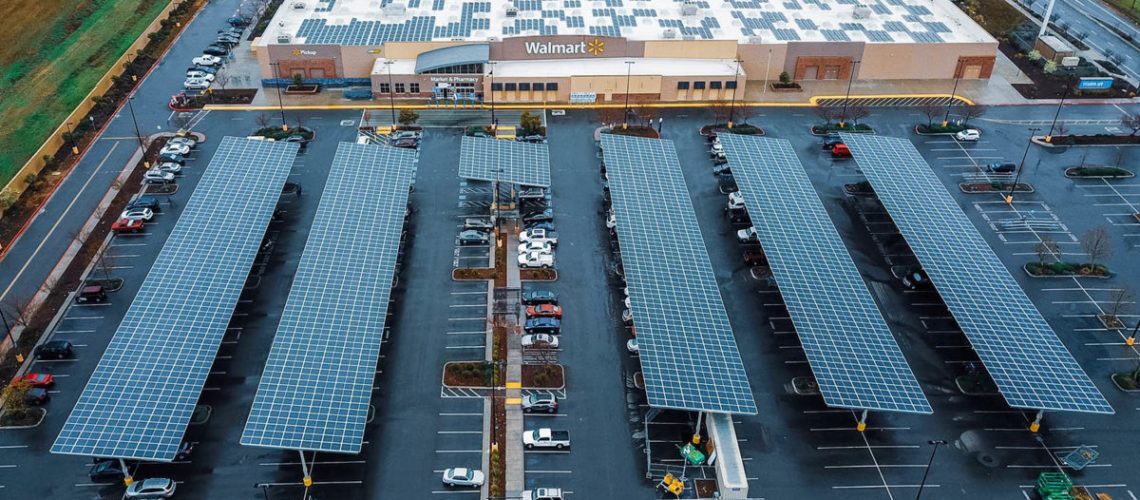California has made major strides in the energy transition from carbon-based fuels to a power supply that is 100% emissions free by 2045. Governor Gavin Newsom released an annual report highlighting this progress, remarking that the state is “on pace” to reach the goal of 100% clean energy by 2045.
The transition is well underway, with nearly 35 GW of renewable resources already providing power to the grid, 9 GW of which came online in the last three years. In just over 20 years, the Governor’s office projects a need for an additional 148 GW to meet California’s clean energy demand.
This represents a growth of 400% over the next two decades, a tall order, but one that is achievable for the frontrunner in clean energy technologies nationwide. Already, California surpassed targets of a 33% share for renewable energy, has reduced emissions below 1990 levels, and has sold over 1.5 million electric vehicles.
As of 2021, 59% of the state’s electricity comes from zero-carbon sources. Traditional renewables, including solar and wind, represent 37.2%, while large-scale hydropower carries a 10.7% share and nuclear energy supplying 10.8%. California seeks an interim target of 90% emissions-free electricity by 2035.
“Many of the ambitious goals we have set for ourselves have already been reached – some earlier than we expected. Building on that progress, California remains committed to leading the fight against climate change and will take the necessary actions to protect energy reliability during the clean energy transition,” said Governor Newsom.
Solar is expected to provide the largest share of electricity in the state, preferred for its low cost and ability to be built in a variety of designs, from smaller built environment distributed projects to large utility-scale solar facilities. The projected generation mix for 2045 is seen below.
“We can do even more to take advantage of the existing built environment on the large rooftops of warehouses and superstores, along highways and over parking lots to get to our goals even faster, while protecting our open spaces,” said Laura Deehan, state director, Environment California.
California is also working to tackle the issue of equity in the energy transition. It recently passed laws to establish a community solar market that requires at least 51% of the capacity serve low- to moderate income residents. The program helps extend access to lower-cost renewable energy to renters and other residents who are otherwise unable to invest in rooftop solar.
Energy insecurity is a persistent problem across the United States, and California is no exception. Over the last two years, California distributed $1.6 billion to address household energy debt that accrued as a result of the COVID-19 pandemic. These investments have provided utility debt relief to more than 3 million customers, said the report. The state is investing nearly $1 billion to support building decarbonization with a prioritization on low- and moderate-income households, as well as disadvantaged communities.
The state also passed Assembly Bill 205, which establishes a new voluntary environmental review permitting process for clean energy resources under the purview of the California Energy Commission (CEC). The CEC will hold environmental review processes for carbon-free generation to a maximum of 270 days, and its approval will stand in lieu of most local, state, and regional permits. The review process also requires projects to include skilled and trained standards for workforce, community benefits, and local fiscal benefits.
Electrification, transmission, storage
To meet this steadily increasing supply of intermittent and diverse energy sources, energy storage will be needed to supplement generation. The buildout has leapt from only 250 MW in 2019 to an expected 5,000 MW by the end of 2023, a growth of 2,000% in four years. The report said a mix of distributed battery storage and grid-scale long duration energy storage will be needed to support a reliable supply of electricity.
CEC has implemented a long duration energy storage program that is providing $140 million to ignite growth in this area. The California Public Utilities Commission has also ordered the procurement of 2 GW of new long-duration energy storage projects and 2 GW of clean firm electric resources like geothermal by 2028. The 2022-23 State Budget Act dedicated $2.8 billion to new clean energy technologies like offshore wind, long-duration energy storage, industrial decarbonization, and hydrogen and battery energy storage.
Along with more clean electricity generation, the state targets increased electrification of appliances and HVAC systems, dropping gas consumption by 94% along the way. The 2045 transition is expected to create 4 million new jobs, cut air pollution by 71%, and save Californians an estimated $200 billion in health costs due to reduced pollution.
Electrification of transportation is another core element of California’s plan. The state banned the sale of new internal combustion engines by 2035. Already, over 21% of California’s new car sales are zero-emission vehicles, rising sharply from 6.8% in 2019.
By 2030, electric vehicle charging is expected to account for less than 5% of the state’s peak demand, and EVs are showing promise for being participants in smart grid programs like vehicle-to-grid and vehicle-to-home power export, which can further help balance the daily mismatch between power generation and evening energy demand.
Upgrades to California’s transmission grid will be needed to support the wholesale change to electrification as well. In May 2023, the California ISO Board of Governors approved the 2022-2023 10-year transmission plan which approved the largest tranche of new transmission in the California ISO’s history.
The plan includes 45 projects, totaling $7.3 billion in new investments in the transmission grid. The plan also reflects a more proactive and strategic approach to studying and recommending new transmission by establishing the zones targeted for resource development and proactive transmission development that will shape future resource interconnection and procurement.
“Harnessing the innovation, drive, and tenacity our state is known for, California is well-positioned to build on our early successes and deliver clean, reliable, affordable energy for all Californians for generations to come,” concluded Governor Newsom.



